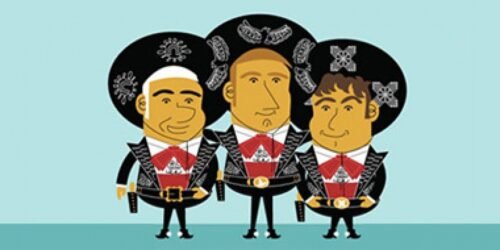Is self-organisation an inspirational dream or the new reality?
Self-organising teams are a staple of the agile way of working, but with so many hierarchical organisations built on industrial era ideals, how can we really make the transition from self-management to self-direction? In this podcast, we dig into the changing way we work as a team.
Summary
- Self-organisation is the end state of self-management.
- Under self-management, goals are given by leadership and communicated to teams with guidance and direction.
- In self-directed management, people set up their own goals and there’s little to no supervision.
- Self-directed management is more powerful but rare.
- Decision making in a lot of organisations is just too slow. We need to be able to make decisions a lot more quickly to satisfy the customer. There’s often a lot of organisational baggage behind this. Managers think they can add value to decision making but slow things down.
- Organisations have deeply embedded cultures of hierarchy – it’s hard to shift this way of thinking. Some organisations, therefore run a dual way of working, a network of teams and self-organising teams but with hierarchy.
- Examples of self-organisation include the US military as shown in the book Team of Teams.
- When we consider democratising decision making, we need to consider the benefits: trust, support, removing obstacles, giving people the autonomy to make the right decisions.
- When you take away thinking from people, you take away innovation and creativity.
- Customers want faster responses, they want products faster, they want their problems solved faster.
- Whether that’s the US military trying to wipe out the enemy or being a customer service representative trying to resolve a customer’s mobile phone issue, there’s still the need for speed.
- When we think about change, we’re going to use the power of a team to influence things.
- You generally find a third of people in favour of change, a third who are sitting on the fence and waiting to see what happens, and a final third who are not in favour of the change. Typically, the focus is on moving the middle third. There are causalities in this type of change, the final third will have to move with the others or decide to move on.
- As a leader, your job is to build culture like a campfire to make it so warm that people want to gather around it.
- A lot of our thinking is cultural with many hang-ups from the industrial era.
- People self-organise naturally, at work we tend to take that away from them.
- If you’re a leader, lead the charge by example. Don’t micromanage.
- People want to come to work and do the best work they can.
- When people feel like they are adding value, it reinforces that behaviour.
- We need to encourage good behaviours and call out unwanted behaviours.
- With great power comes great responsibility, you need to own responsibility.
- People will fall back on old behaviours, that doesn’t mean everything is broken.
- You need to accept the core values of the organisation.
- Individuals need to know what their role is in the team.
- We need to own up to mistakes, be humble, learn, help others.
- We must move from a focus on “me” to “we”.
- We have to unlearn old behaviours.
- If you’re telling your people what to do, you’re responsible for their results.
Suggested reading:
- Intent based leadership– David Marquet
- Turn the ship around – David Marquet
- Drive – Daniel Pink
- Team of teams – Tantum Collins, David Silverman
Categories:General
Vagile


